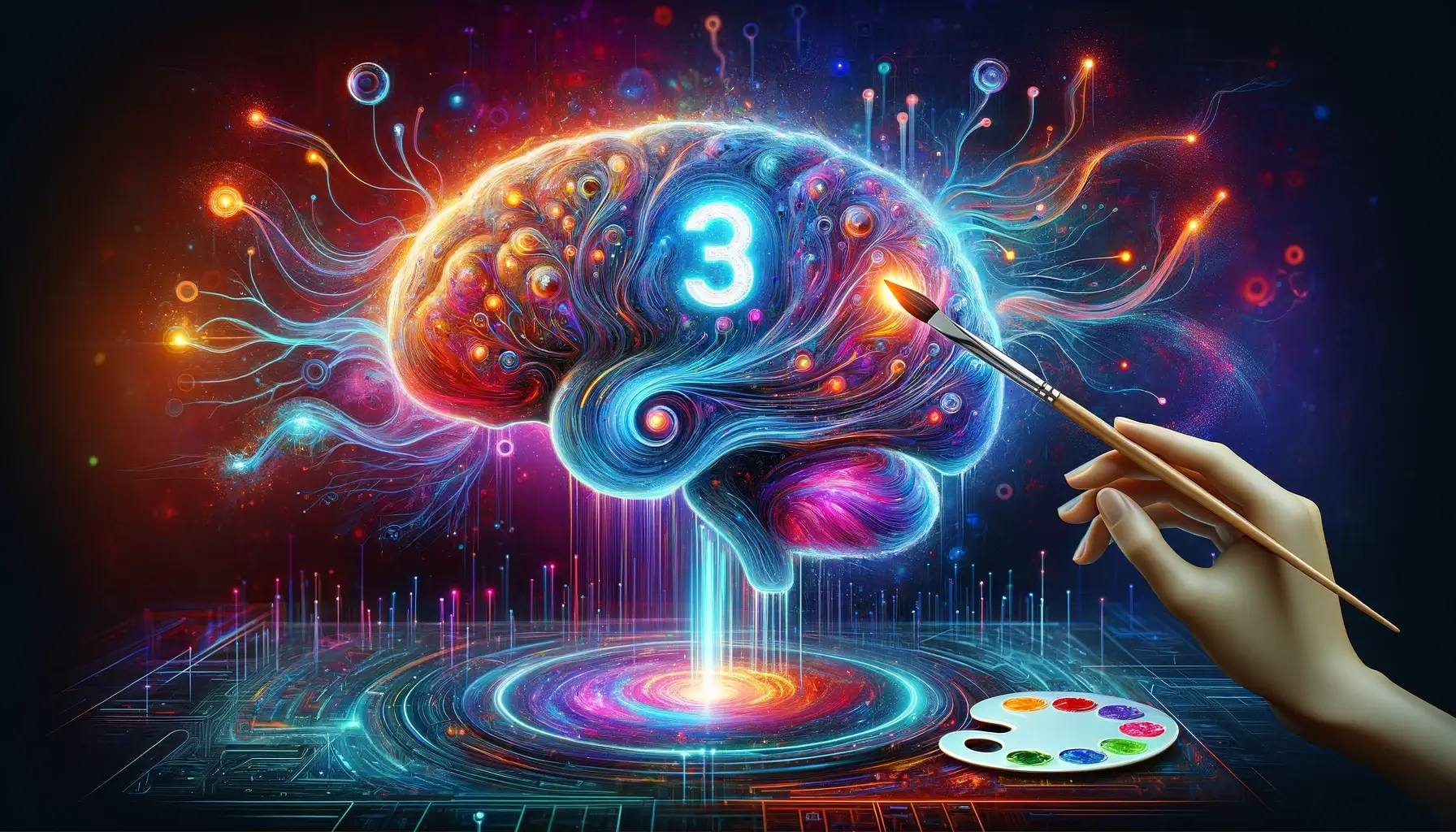Explore the Future of Art with DALL·E 3 AI

Welcome to the era where computers not only “think” but also “create”! One of the most fascinating players in the field of artificial intelligence is undoubtedly DALL·E 3, an advanced AI image generator that can turn your words into images as vivid as you can imagine. Whether you’re a graphic designer seeking inspiration, a marketing specialist in a tight spot, or just a curious individual, DALL·E 3 is here to show you that the limits of creativity are still far beyond the horizon.
In the following paragraphs, we will take a detailed look at what DALL·E 3 is, how it works, why you might want to use it, and several amazing examples of what it can do. Get ready to have your imagination thoroughly aired out!

What is DALL·E 3?
DALL·E 3 is the latest version of the revolutionary AI system from OpenAI, specializing in generating images from textual descriptions. The name “DALL·E” is a pun combining the name of the famous surrealist artist Salvador Dalí with the popular character from the animated movie WALL·E. This combination of art and technology perfectly encapsulates what DALL·E can do—create visually stunning and often very original images based on user prompts.
Development and Technology DALL·E 3
DALL·E first appeared as DALL·E 1 in 2021 and was then improved to DALL·E 2 in 2022, which brought higher resolution images and better understanding of more complex descriptions. DALL·E 3, introduced in 2023, continues this evolution with even more advanced capabilities, including better detail, more realistic textures, and a more sophisticated interpretation of user instructions.
How Does It Work?
At the heart of DALL·E 3 is a model called a diffusion model, which gradually transforms random noise into a detailed image that matches the user’s description. Imagine it as painting, where AI first sprays the canvas with random colors and gradually creates a meaningful picture from these colors. Users provide “prompts”—text descriptions of what they want to see, and DALL·E 3, using its training on a vast dataset of images and descriptions, translates these textual descriptions into visual works.
If you find this introduction intriguing, we can continue to explore more about what DALL·E 3 is used for, the advantages it offers, and some ethical issues its use raises. What do you think?
What is DALL·E 3 Used For?
DALL·E 3 is not just an ordinary image generator; it is a tool that opens up new possibilities in many different fields. Let’s look at some examples of how this AI system is changing the rules of the game.
Art and Creative Industries DALL·E 3
Artists and designers use DALL·E 3 to experiment with new visual styles and concepts. Imagine you’re an artist wanting to create a painting in the style of Impressionism but with a modern twist, such as neon colors or futuristic motifs. Just provide a precise description, and DALL·E 3 will create something completely unique, which could be displayed in a gallery or used as a design for an album or book.
Advertising and Marketing
Marketing specialists use DALL·E 3 for rapid prototyping of advertising ideas and visuals. Instead of spending long hours working with graphic designers, marketers can instantly see what the final product might look like, significantly speeding up the approval and implementation process of creative campaigns.
Education and Research
In academic and educational circles, DALL·E 3 is used to create visual aids that help illustrate complex concepts. For example, teachers can generate images of historical events or scientific phenomena that are more accurate and tailored to the context of the lesson than what they might find in standard textbooks.
Advantages of DALL·E 3
Using DALL·E 3 offers several advantages that can be attractive for both professionals and general users. Here are some of the main ones:
Accuracy and Detail DALL·E 3
Thanks to advanced algorithms and a massive learning database, DALL·E 3 can boast a high level of detail and accuracy in its creations. The images are often so convincing that they can be hard to distinguish from photographs or hand-drawn artworks.
Speed and Efficiency
Creating quality images can be time-consuming, especially if you need something specific or unique. DALL·E 3 can generate images in seconds, allowing for rapid iteration and experimentation.
Customizability and Interactivity
The flexibility of DALL·E 3 allows users to play with ideas and receive visual feedback in real-time. You can “communicate” with AI, adjust your requests, and see the results immediately, leading to a better understanding of what works and what does not.
Ethical Aspects and Challenges DALL·E 3
Like any technology, DALL·E 3 brings several ethical challenges that need to be addressed. Copyright issues, originality of work, and potential misuse are just a few of the questions that provoke debates among experts and the general public. How this technology should be regulated and how to ensure it is used responsibly are key questions for the future.
Curiosities and Future of DALL·E 3
DALL·E 3 is not only a technological marvel but also a source of endless curiosities and opportunities for speculation about the future. Let’s explore some examples of how this AI image generator entertains, inspires, and provokes.
Most Intriguing Creations
Since its launch, DALL·E 3 has produced a range of images that have captured attention both for their originality and surprising detail. Popular among fans are images that combine different historical epochs with modern technologies, or artistic works that blend styles from various famous painters. One of the most shared creations was an image depicting Shakespeare writing on a laptop at Starbucks. These images not only entertain and inspire but also show how AI can transcend the boundaries of human creativity.
AI as a Tool for Discovering New Artistic Styles
DALL·E 3 is not just a replicator of existing artistic styles. Researchers and artists are experimenting with how AI can help discover entirely new styles. Imagine combining Impressionism with graffiti, or creating images that might look like works from alternative, imaginary historical periods. These experiments not only expand the boundaries of art but also demonstrate how AI can serve as a collaborator in the creative process.

Future of DALL·E 3 and Its Impact on Industries
Transforming Creative Industries
DALL·E 3 and similar technologies have the potential to fundamentally change the way we work across various creative fields, from advertising to film production. For instance, in the film industry, DALL·E 3 could help visualize scenes or characters before committing to expensive production processes. In advertising, this technology could allow companies to respond more quickly to market trends with visually captivating campaigns that are tailored to current needs.
Ethical and Legal Questions DALL·E 3
As DALL·E 3 becomes more common, questions about copyright, responsibility for generated content, and possibilities for misuse continue to grow. The debate on how AI should be regulated and who bears responsibility for its creations will likely continue and evolve with further innovations in the field.
Conclusion
DALL·E 3 is a fascinating example of how far artificial intelligence can go in the realm of creativity and visual art. From opening new possibilities for artists and designers, to improving marketing strategies, to supporting educational processes, DALL·E 3 shows that the line between “artificial” and “real” art is continually blurring. Whether you’re an enthusiastic tech visionary or just someone who appreciates beautiful images, DALL·E 3 has something to amaze you. As these technologies develop, one thing is certain—the future of creativity is now more interesting than ever before.


[…] Explore the Future of Art with DALL·E 3 AI […]